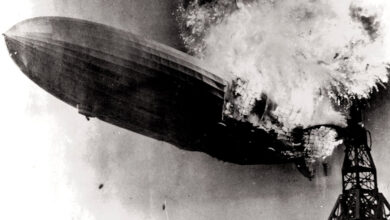Podcast: Play in new window | Download
Have you ever wondered how the exhilarating thrill of riding a two-wheeler came into existence? Let’s travel back to the year eighteen sixty-seven when the very first steam-powered two-wheeler was introduced to the world by Michaux-Perreaux. This was a remarkable innovation that set the stage for what was to come. However, the true birth of what we now recognise as a motorcycle didn’t occur until eighteen eighty-five. This is when Gottlieb Daimler, a name synonymous with automotive innovation, introduced the first gas-powered motorcycle. This remarkable creation was powered by an internal combustion engine, a technology that was in its infancy at the time, yet proved to be a game changer in the world of transportation. From steam to gas, these innovations paved the way for the motorcycles we know and adore today. The birth of the motorcycle, a simple yet revolutionary invention, marked the beginning of a new era in transportation.
As we moved into the 20th century, motorcycles underwent significant transformations.” The dawn of the 20th century brought about a wave of innovation and design changes that would forever alter the motorcycle landscape. The introduction of the V-twin engine by Harley-Davidson in 1909 was a landmark moment in this evolution. This powerhouse of an engine, with its two cylinders placed in a V configuration, became the heart of many Harley-Davidson motorcycles, providing a distinctive sound and performance that would become synonymous with the brand. But innovation wasn’t limited to engines. The early 20th century saw a boom in motorcycle popularity, largely due to the exigencies of World War I. Motorcycles became an essential part of the war effort, used for everything from transporting messages to carrying soldiers across the battlefield. These motorcycles were rugged, reliable, and built to withstand the harshest conditions. This period of intense use and rapid development led to significant improvements in both design and technology. Post-war, the popularity of motorcycles didn’t wane. In fact, it soared. One of the most iconic motorcycles to emerge during this period was the Indian Chief, launched in 1922. With its large, powerful engine, distinctive styling, and reliable performance, the Indian Chief captured the imagination of many a motorcyclist. It represented freedom, adventure, and the open road – ideals that continue to define the spirit of motorcycling even today. But these weren’t just machines of metal and rubber. They were symbols of a changing world, a testament to human ingenuity and a reflection of the times. They embodied the spirit of the age – a time of rapid progress, unprecedented change, and boundless optimism. Each advancement, each innovation, each new model brought with it a sense of excitement and possibility. So, as we look back at the early 20th century, we see a period of remarkable growth and evolution in the world of motorcycles. From the V-twin engine to the Indian Chief, these developments transformed the motorcycle from a simple means of transportation to a symbol of freedom and adventure. “These advancements, driven by necessity and innovation, redefined the motorcycle as we knew it.
With the end of World War II, the motorcycle industry experienced an unprecedented boom.” As the world began to rebuild from the ashes of conflict, motorcycles became a symbol of freedom, adventure, and resilience. This period marked a significant shift in the industry with the rise of Japanese manufacturers such as Honda and Yamaha. These companies brought a new level of innovation and competitiveness, producing bikes that were not only affordable but also reliable and stylish. The post-war era also saw the development of various motorcycle styles, each designed to cater to different riders’ needs and preferences. Cruisers emerged with their relaxed riding position, offering comfort for long-distance travel. The sportbikes, with their aggressive styling and high-performance capabilities, became the choice for those seeking adrenaline-pumping speed and agility. Touring bikes provided the perfect blend of comfort and cargo space for those who wanted to explore the open road. As the decades rolled on, advancements in technology continued to revolutionize the world of motorcycles. Fuel injection systems replaced traditional carburettors, offering improved efficiency and performance. Anti-lock braking systems, or ABS, became a standard feature, providing riders with greater control and safety. But perhaps the most exciting development of all has been the rise of electric motorcycles. These eco-friendly machines are not just a nod to sustainability, but also a testament to the industry’s relentless pursuit of innovation. With silent operation and instant torque, electric motorcycles are pushing the boundaries of what two-wheeled machines can do. It’s a fascinating journey, from the rudimentary steam-powered two-wheelers of the 19th century to the high-tech electric superbikes of today. Each advancement, each new design, and each technological breakthrough has been a step forward in our never-ending quest for speed, freedom, and the pure joy of riding. “From steam-powered two-wheelers to electric superbikes, the evolution of motorcycles is a testament to human ingenuity and the relentless pursuit of speed and freedom.
Podcast: Play in new window | Download





